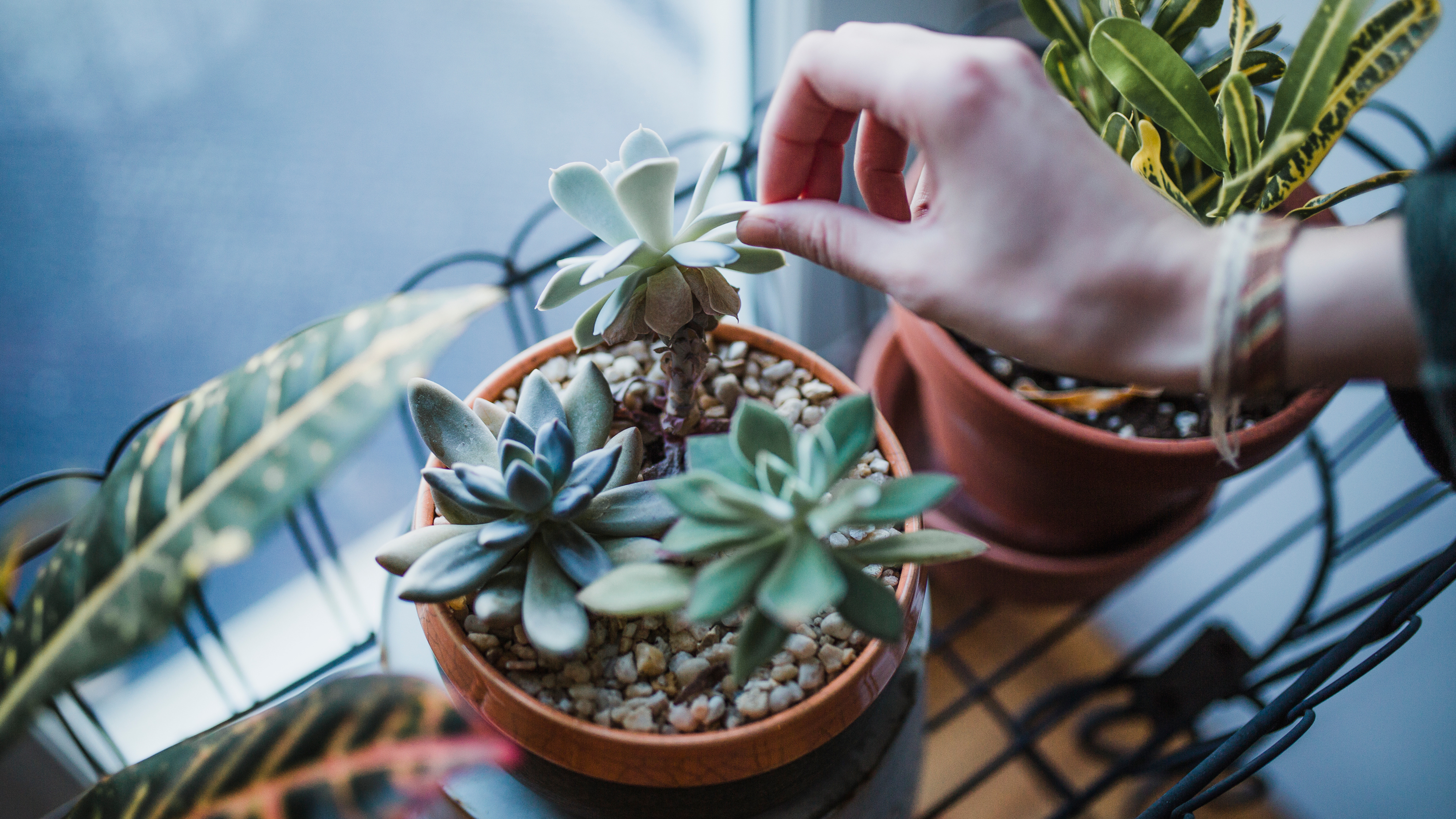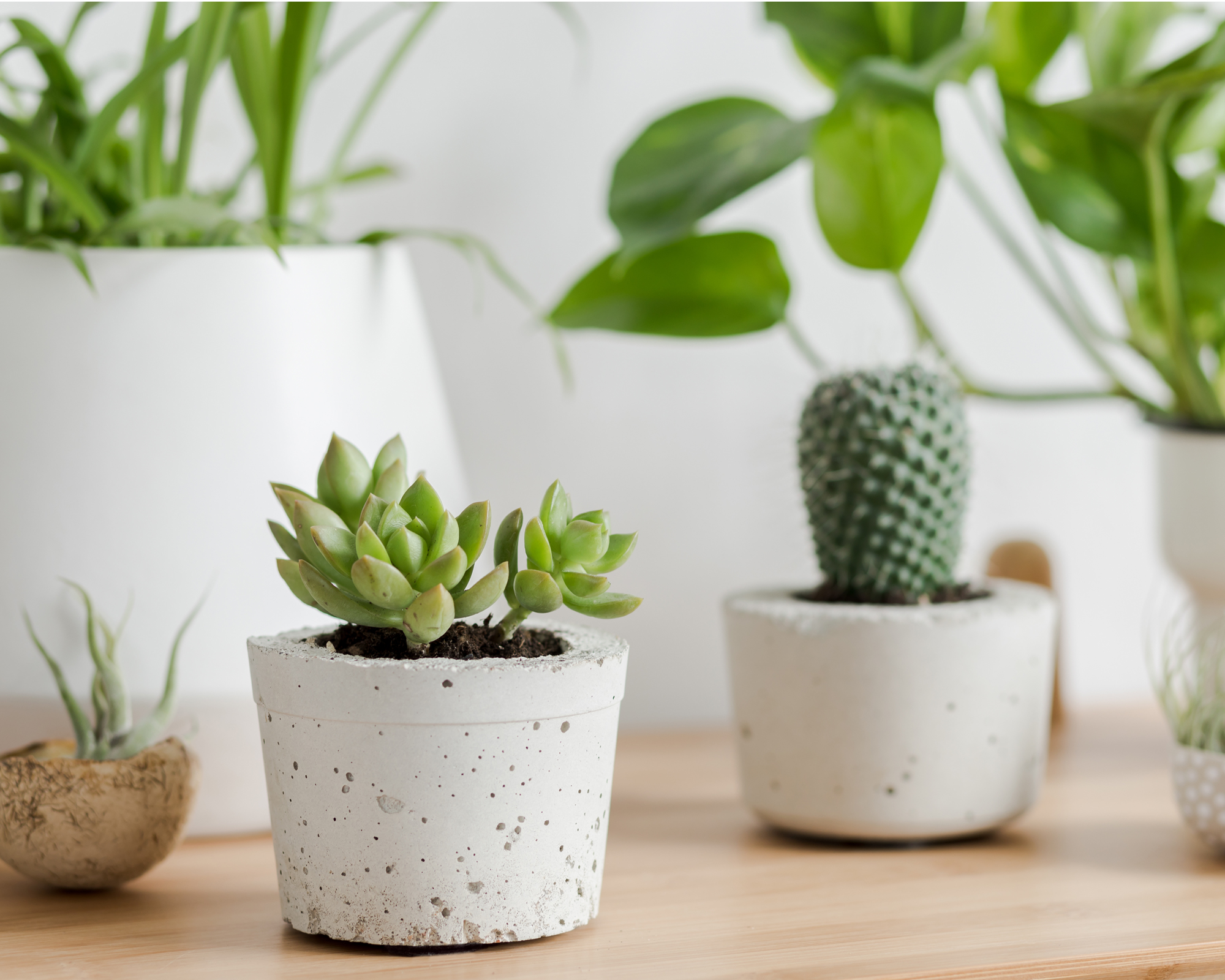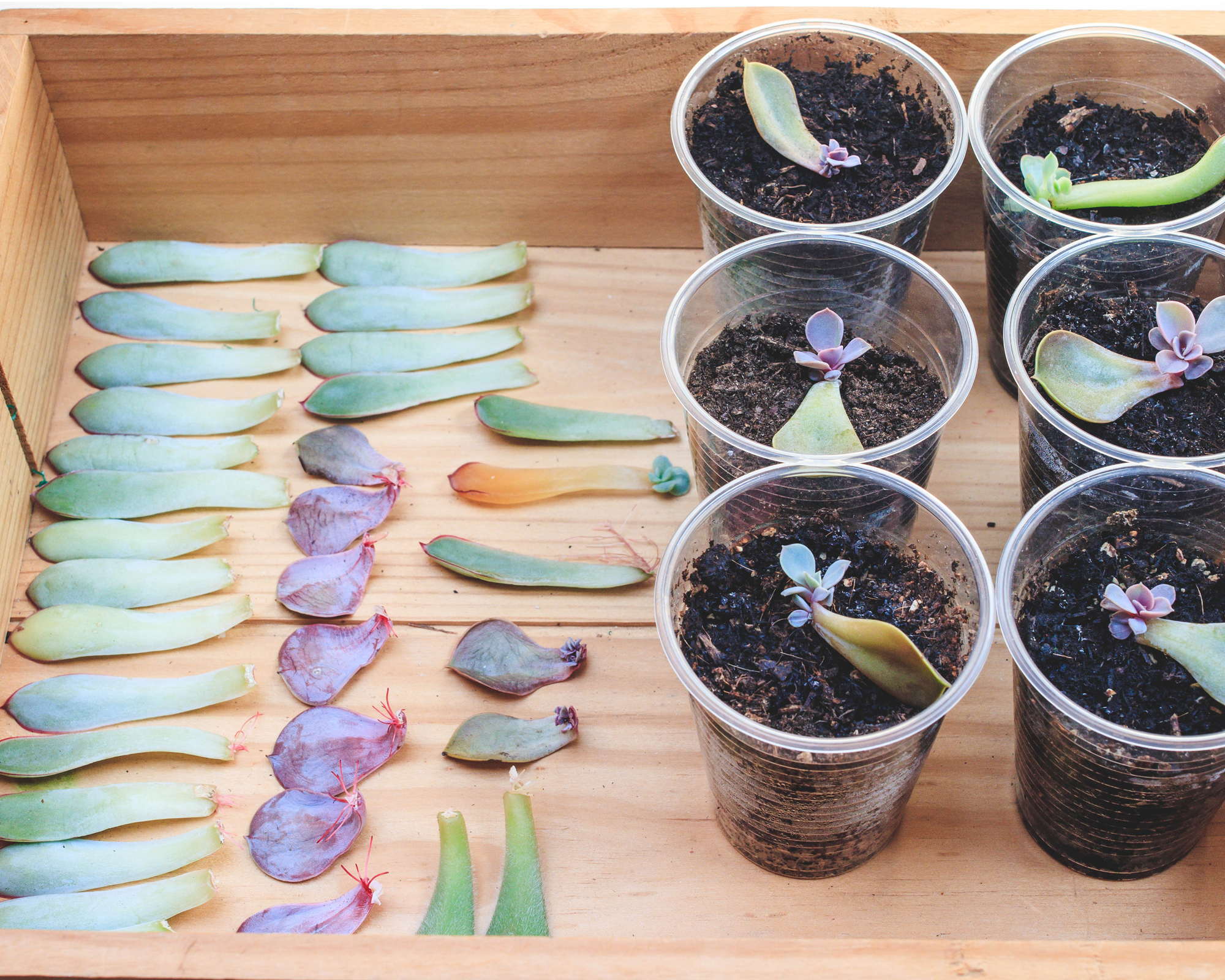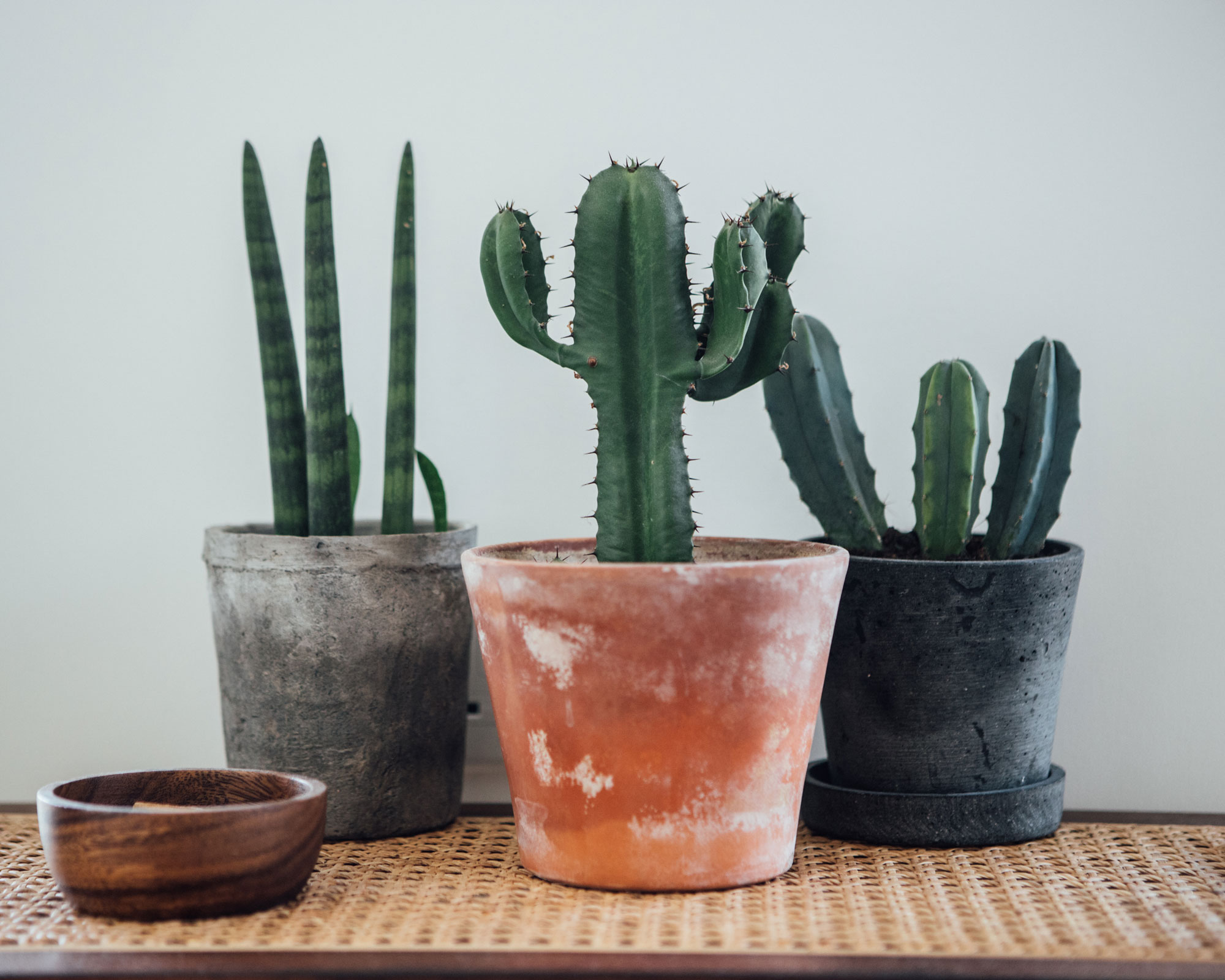How to propagate succulents
Get loads of extra plant babies, completely free

Every proud plant parent should know how to propagate succulents. What is better than filling your home with lots more beautiful plant babies – at no cost! And succulents are a great plant to start with if you are new to propagation.
Succulents are one of the most popular plants for a reason. They come in a dizzying variety of pretty shapes and shades of green – so varied, in fact, that it can be difficult to believe that they all belong to the same family of plants. Like living sculptures, succulents instantly update any home decor.
There's another great thing about succulents. They're the best indoor plants if you tend to accidentally kill yours. Give them plenty of light and don't overwater (succulents can get water stressed), and they most likely will be fine. And, as it turns out, propagating succulents to get more plants for free is very easy. A succulent specialist advises how.

How to propagate succulents from cuttings
First, a bit of good news. Propagating succulents is easy and rewarding. Sonja Detrinidad is the owner of Partly Sunny Projects, an online plant shop specializing in succulents, cacti and air plants out of San Diego County, California. She has some words of encouragement for anyone trying to propagate their succulent plants for the first time: 'Succulents are the ultimate cloning machines. Whether you start with a cutting or just a single leaf, with a little bit of time you can have a brand new plant!'
Detrinidad's favorite way to propagate succulents is from cuttings. Here's what she does, step by step.
1. Take the cutting
Start by taking the cutting you plan to use to propagate your favorite succulent plant. 'You should remove the lower leaves on the stem' – the bit that goes in the soil for rooting shouldn't have any leaf on it.
2. Allow the cutting to dry
This is referred to as 'callousing over' – 'when the plant is allowed to dry, the cut end protects itself from harmful bacteria getting into the plant. You can allow this process to happen for a couple of hours to even several days if you don’t immediately have time to replant.'
Get small space home decor ideas, celeb inspiration, DIY tips and more, straight to your inbox!
3. Choose a medium for propagation
Detrinidad recommends choosing 'a lightweight medium for your plants to root in [as it] will speed up the process. My current go-to for this process is coconut coir. While it’s an inert medium that provides no nutrients, it is a superior rooting base. “Bricks” of coconut coir are readily available online and in most nurseries. These bricks will expand when water is added and you will have a light fluffy medium for your plants to root in.'
4. Choose an appropriate container
The trick to choosing correctly is picking a container 'in proportion to the size of your plant, you don’t want a small cutting swimming in a gigantic pot.' A plastic or terracotta pot left over from another plant will do, but avoid seedling trays as these will be a bit too small.
5. Moisten the medium
'Your rooting medium, whether coir or other lightweight soil should be slightly moist.' Unlike other plants, succulents dislike overly wet soil, so it's best to mist your potting medium from a spray bottle.
6. Choose a good position for the cutting
Don't just put your cutting on a windowsill to fend for itself. 'Place your cuttings in the soil, put them in an area with bright light but not full sun exposure.'
Full sun can scorch cuttings. At the same time, make sure that it gets bright light three to six hours every day.
7. Leave it alone
And now, 'the most important thing to do is walk away!' As Detrinidad stresses, 'the plants will do this next process without intervention, and what actually happens is most people love them too much and fuss over them', but 'succulents simply don’t need that.' Just forget about it for a good couple of weeks.
8. Check if the cutting has rooted
'In a couple of weeks, you can gently pull on the plant and you should see some roots forming. Once you see roots you can replant in a more permanent pot and in a well-draining succulent soil mix.'
Detrinidad advises selecting the soil mix based on 'the understanding that your own particular microclimate, whether indoors or out, will determine the type of soil you should have.' If you live in more humid and wet conditions, you will need 'a more gritty base.' Live in a dry, hot climate? Your soil mix 'can be heavier on organic matter to retain slightly more moisture.'
How to propagate succulents from a leaf

Detrinidad tells us that 'leaf propagation will take longer to get a full-sized plant but the process is very fulfilling.'
'Leaves should be fully intact with no damage to the base of the leaf where it was originally joined to the stem.'
As is the case with cuttings, 'leaves require no care and will easily sprout, but must be kept out of harsh sunlight.'
You don't even need to pot them up at first. 'Your leaves can be simply scattered on a shallow dish of soil or simply left on a paper plate. Given a little bit of time, roots will initially show up and while you may be tempted to water them, don’t. Watering your leaf may actually stop the process and all you get is a fat leaf with roots but no plant. Letting a little more time pass you will eventually see the beginning of a miniature plant.'
How do you know when your leaf has propagated into a plant? 'The process is pretty much completed once the mother leaf is completely dried up. The dried-up leaf can then be gently removed and your tiny plant can find its own home in a favorite small container.'
It really couldn't be simpler.

Is propagating cacti the same as propagating succulents?
To put it simply, 'cacti are succulents but not all succulents are cacti. The same process of letting a succulent cutting callous over can be applied to a cactus. However, cacti should be rooted in a well-draining gritty mix. Grit, like pumice, perlite or coarse sand can be added to any quality soil to achieve this. A 60–40 mixture is a good starting point.'
Just make sure you wear gloves to protect your hands in the process.
Does propagating succulents work better in water or in soil?
Neither. As we've seen, propagating succulents from cuttings should be done in a neutral growing medium such as coir, while propagating succulents from leaves just requires air, no water.
What is the fastest way to root succulents?
Succulents will root faster if you go with propagating from cuttings. Having said that, propagating from leaves is easier, even if it takes a little longer.
Anna is a professional writer with many years of experience. She has a passion for contemporary home decor and gardening. She covers a range of topics, from practical advice to interior and garden design.